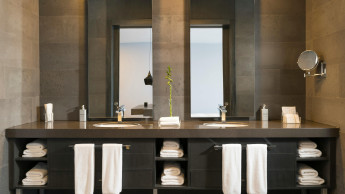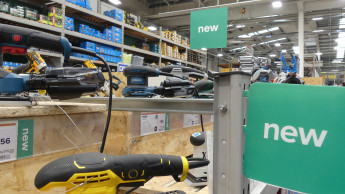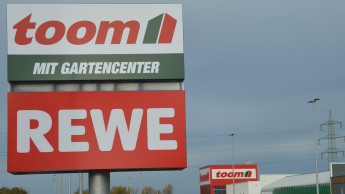Just as in 2003, the DIY market in the Netherlands will have to be content with a very slight rate of growth in 2004 as well
Increasing sales
More lacquers and stains were sold in the area of paint. However, the segment had to be satisfied with a 0.8 per cent decrease in terms of volume, even though sales went up by 2.3 per cent. Which means that paint went up in price. This development is not actually in tune with changes in the retail scene. In fact, the proportion of sales attributed to the DIY stores, which ultimately have a “more value-for-money image”, has been growing since 2001, and the proportion going to the specialist paint and wallpaper shops has been declining. DIY stores sold paint worth € 217 mio in 2003, representing growth of 19 per cent compared with 2001. The specialist shops lost 8.5 per cent over the same period of time. Their 2003 sales came to € 195 mio.
Paint sales (H mio)(download .pdf-file)
Sales of adhesives and mortars rose from € 60 mio in 2001 to € 68 mio in 2003. In the meantime, 65 per cent of such sales were made at the checkouts of the DIY stores, which consequently increased their share. Hardware shops and paint and wallpaper specialists had to watch their shares shrink.
Declining sales
The year 2003 was not a particularly good one for locks and fittings, a segment where sales fell from € 27 mio to € 25 mio. The sale of these products mainly goes through DIY stores and hardware shops. In the case of the DIY stores, sales grew from € 12.6 mio to € 13.5 mio, which means their share increased from 46 to 54 per cent.
Developments were not exactly rosy for power tools. Sales here in 2003 shrank by 6.5 per cent when compared with 2002, from € 111 mio to € 104 mio. Even though the turnover achieved by the DIY stores went down from € 68.3 mio to € 66.8 mio, their proportion of total sales went up from 61.5 per cent to 64.2 per cent.
Sales of locks and fittings (H 1,000)(download .pdf-files)
Hardware shops and the remaining DIY retailers were forced to surrender share. With regard to sales in quantitative terms, power drills still head the field: 602 000 units were sold in both 2002 and 2003.
What the performance data for 2004 will look like is still questionable. A slight amount of growth is expected. The first eight periods of the GfK Sales Monitor suggest that a small increase of 0.4 per cent can be expected. That would mean growth in excess of 1.5 per cent when extrapolated onto the entire year. Since this year actually has 53 weeks, with five shopping days in the last week, even an increase of 3 per cent might well be feasible.
Strong DIY stores
The larger DIY superstores are strengthening their position at the expense of the smaller companies selling DIY products. Nevertheless, it emerges from GfK’s structural analysis that the brakes are being put on growth. The number of DIY stores rose by 58 between 1998 and 2001, and only 17 were added between 2001 and 2003.
The average retail area increased from 2 267 m² in 1998 through 2 610 m² in 2001 and on to 2 804 m² in mid-2003.
Where the other store types are concerned, fewer outlets were recorded in 2003 than in 2001. The greatest reduction is noticeable among the small stores, where the number went down by nine per cent (71 outlets). The number of paint and wallpaper shops also declined (by six per cent), and the hardware shops went down by three per cent.
The three small-format store concepts (Doeland, Hubo and Fixet) demonstrated marked growth between 1998 and 2001, but their total number of outlets went down between 2001 and 2003 in parallel with the average floorspace. This is because small-format stores were increasingly being transformed into DIY superstores. The average retail area of paint and wallpaper shops was down by around 3 m², and by 38 m² in the case of hardware shops.
Sales of adhesives and mortars (H mio)(download .-pdf-file)
Sales of power tools (H 1 000)(download .pdf-file)
Average store area of retail channels (m²)(download .pdf-file)
Number of outlets by retail channel(download .pdf-file)
DIY superstores in the Netherlands(download .pdf-file)

 Menü
Menü
















